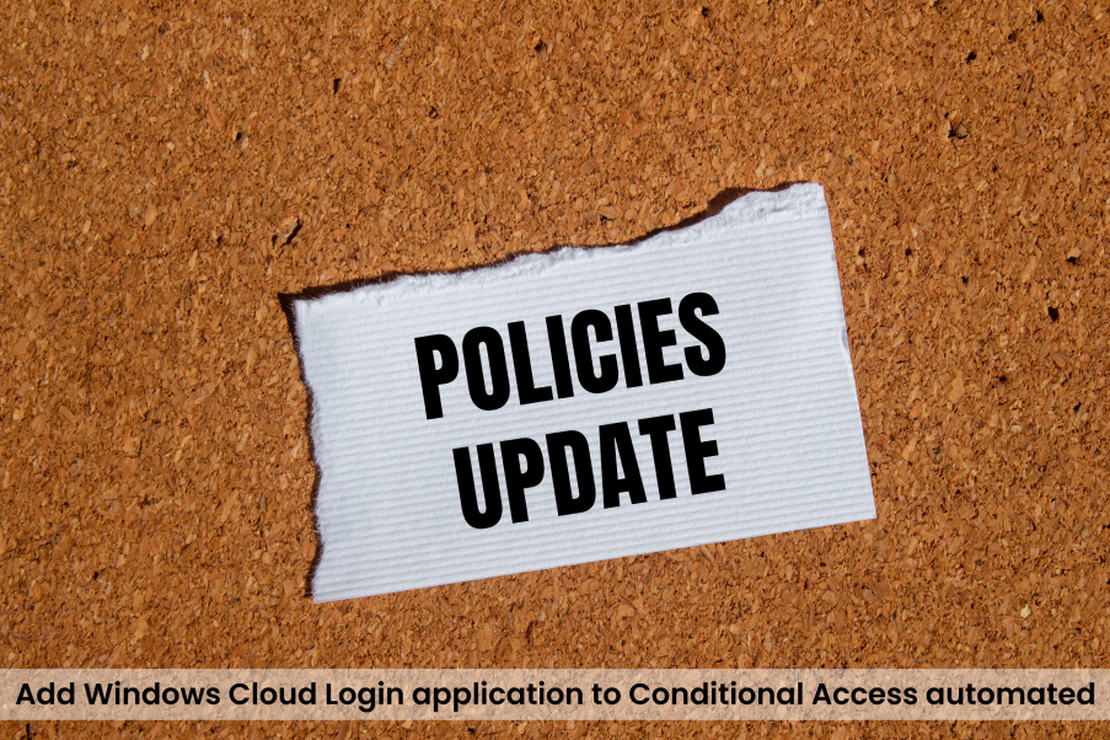Add Windows Cloud Login application to Conditional Access automated
Single Sign On (SSO) for Azure Virtual Desktop (AVD) gives users a seamless login experience from their Windows 10 or Windows 11 device to AVD. This feature is available for a while and most people have configured this feature already. Also, most are also using Conditional Access (CA) (I hope). To make Single Sign On work for AVD in combination with CA policies you need to add the applications Microsoft Remote Desktop (a4a365df-50f1-4397-bc59-1a1564b8bb9c) to your CA policies. Based on your situation the applications are in- or excluded.
Now, Microsoft announced that the Single Sign On traffic will be transitioned from the Microsoft Remote Desktop app to Windows Cloud Login. This means you have to add this application to your CA policies. This can be done manually, but I prefer to automate this. In this blog post, I will show you how to add the Windows Cloud Login application to your CA policies automated.





